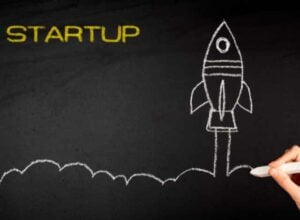In today’s rapidly evolving business landscape, the skills gap has emerged as a significant challenge for companies across various sectors. This gap refers to the disparity between the skills that employers require and the skills that employees possess. As technology advances and market demands shift, organizations often find themselves struggling to keep their workforce equipped with the necessary competencies.
For instance, industries such as information technology, healthcare, and manufacturing are experiencing a pronounced shortage of skilled workers, which can hinder productivity and innovation. To effectively address this issue, businesses must first conduct a thorough analysis of their current workforce capabilities. This involves assessing existing skills, identifying deficiencies, and understanding the specific competencies that are in demand within their industry.
Engaging with employees through surveys or interviews can provide valuable insights into their perceived skill levels and areas where they feel additional training is needed. By gaining a comprehensive understanding of the skills gap, organizations can tailor their upskilling initiatives to meet both current and future needs.
Identifying Key Areas for Upskilling
Aligning Upskilling with Business Objectives
Once the skills gap has been identified, the next step is to pinpoint the key areas where upskilling is most critical. This process requires a strategic approach that aligns with the organization’s overall goals and objectives. For example, if a company is looking to enhance its digital marketing efforts, it may need to focus on upskilling employees in areas such as data analytics, social media management, and search engine optimization.
Maximizing the Impact of Training Programs
By concentrating on specific skill sets that directly contribute to business growth, organizations can maximize the impact of their training programs. Moreover, it is essential to consider emerging trends and technologies that may influence the future of work. Industries are increasingly adopting automation, artificial intelligence, and other advanced technologies, which necessitate a workforce that is adaptable and proficient in these areas.
Staying Ahead of Industry Developments
Companies should stay informed about industry developments and proactively identify skills that will be in high demand in the coming years. By prioritizing these key areas for upskilling, organizations can ensure that their employees remain competitive and capable of driving innovation.
Setting Clear Objectives and Goals
Establishing clear objectives and goals is a fundamental aspect of any successful upskilling initiative. These objectives should be specific, measurable, achievable, relevant, and time-bound (SMART). For instance, a company might set a goal to increase the number of employees proficient in data analysis by 30% within six months.
By defining such targets, organizations can create a roadmap for their training programs and provide employees with a clear understanding of what is expected of them. In addition to individual goals, it is also important to align upskilling objectives with broader organizational strategies. This alignment ensures that training efforts contribute to overall business success and helps to foster a culture of continuous learning within the organization.
For example, if a company aims to expand its market reach, upskilling employees in sales techniques and customer relationship management could be prioritized. By setting clear objectives that resonate with both employee development and organizational growth, companies can create a more focused and effective upskilling program.
Developing a Training Plan
With objectives in place, the next step is to develop a comprehensive training plan that outlines how the upskilling initiative will be executed. This plan should detail the types of training methods that will be employed, such as workshops, online courses, mentorship programs, or on-the-job training. Each method has its advantages; for instance, online courses offer flexibility for employees with varying schedules, while workshops can foster collaboration and hands-on learning.
Additionally, it is crucial to consider the timeline for implementing the training program. A well-structured timeline allows organizations to allocate resources effectively and ensures that employees have ample opportunity to engage with the training materials. Furthermore, incorporating feedback mechanisms into the training plan can help organizations make necessary adjustments along the way.
For example, if participants express difficulty with certain topics, additional resources or alternative training methods can be introduced to enhance understanding.
Securing Budget and Resources
Securing adequate budget and resources is often one of the most challenging aspects of implementing an upskilling program. Organizations must assess their financial capabilities and determine how much they can allocate toward training initiatives. This may involve exploring various funding options, such as internal budget reallocations or external grants specifically aimed at workforce development.
In addition to financial resources, companies should also consider the human resources required for successful implementation. This includes identifying trainers or facilitators who possess expertise in the relevant subject matter. Collaborating with external training providers or industry experts can also enhance the quality of the program.
By ensuring that both financial and human resources are in place, organizations can create a robust foundation for their upskilling initiatives.
Implementing the Upskilling Program
Once all preparations are complete, it is time to implement the upskilling program. Effective communication is key during this phase; employees should be informed about the program’s objectives, structure, and benefits. Creating excitement around the initiative can encourage participation and engagement among staff members.
For instance, hosting an introductory session or workshop can help generate interest and provide an overview of what participants can expect. During implementation, it is essential to foster an environment that encourages continuous learning and collaboration. Encouraging peer-to-peer learning through group projects or study sessions can enhance knowledge retention and create a sense of community among participants.
Additionally, providing ongoing support throughout the training process—such as access to resources or mentorship—can help employees feel more confident in their ability to acquire new skills.
Monitoring and Evaluating Progress
Monitoring and evaluating progress throughout the upskilling program is crucial for ensuring its effectiveness. Organizations should establish key performance indicators (KPIs) that align with their initial objectives and goals. These KPIs could include metrics such as completion rates of training modules, employee feedback scores, or improvements in job performance post-training.
Regular check-ins with participants can provide valuable insights into their experiences and challenges during the training process. Surveys or informal discussions can help gauge employee satisfaction and identify areas for improvement within the program. By actively monitoring progress and making necessary adjustments along the way, organizations can enhance the overall effectiveness of their upskilling initiatives.
Measuring the Impact of Upskilling
Finally, measuring the impact of upskilling on both individual employees and the organization as a whole is essential for demonstrating the value of these initiatives. This evaluation should encompass both qualitative and quantitative measures. For example, organizations can assess improvements in employee performance through performance reviews or productivity metrics following training completion.
Additionally, gathering feedback from employees about how their newly acquired skills have influenced their work can provide valuable insights into the program’s effectiveness. Companies may also want to analyze broader organizational outcomes such as increased revenue or improved customer satisfaction rates as a result of enhanced employee capabilities. By comprehensively measuring the impact of upskilling efforts, organizations can not only justify their investment but also refine future training initiatives to better meet evolving needs.
In conclusion, addressing the skills gap through effective upskilling programs requires a strategic approach that encompasses understanding current deficiencies, identifying key areas for development, setting clear objectives, developing comprehensive training plans, securing necessary resources, implementing programs effectively, monitoring progress diligently, and measuring impact thoroughly. By following these actionable steps, companies can empower their workforce to thrive in an ever-changing business environment while driving organizational success.























